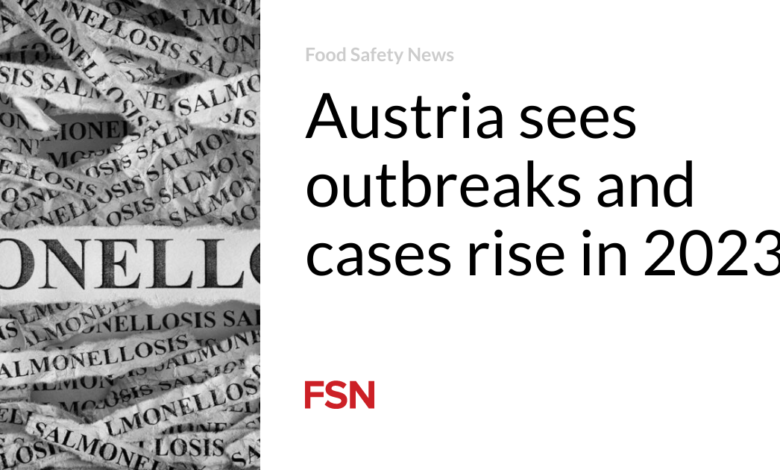Austria sees outbreaks and cases rise in 2023

Austria has reported more outbreaks and related illnesses in 2023 compared to the year before.
A total of 42 foodborne outbreaks were recorded, 14 more than in 2022. Also, 222 people were affected compared to 128 in 2022.
38 people had to be hospitalized in connection with outbreaks and there was one death. The largest outbreak sickened 32 people. 25 incidents were classed as household outbreaks and 20 as general epidemics. Ten Salmonella and five Campylobacter outbreaks were associated with travel abroad.
Data from the Austrian Agency for Health and Food Safety (AGES) shows Salmonella was the most common cause jumping from 11 outbreaks in 2022 to 21 outbreaks, 141 cases, and one death in 2023.
Cross border events
Campylobacter came in second place with 12 outbreaks and 26 cases, followed by five outbreaks of STEC with 12 infections, two outbreaks of norovirus with 138 people sick and one each of Listeria monocytogenes and Yersinia enterocolitica, which affected three and two people respectively.
Three major outbreaks in 2023 were caused by different types of Salmonella Enteritidis. A total of 31 people fell ill in Austria and 10 of them were hospitalized. One person died. This was part of a multi-country outbreak linked to chicken meat from Poland.
One outbreak from 2022 that sickened four people continued in 2023 with another patient. The pathogen was Salmonella Senftenberg and infections were caused by tomatoes likely from Morocco. This was also a multi-country outbreak.
Another cross-border outbreak was due to Salmonella Strathcona. It involved 24 people in Austria, four of whom had to be hospitalized. The suspected food was cherry tomatoes from Italy.
One Listeria outbreak affected three people, two of whom had to be hospitalized. The food vehicle was pork from an Austrian producer.
Control program findings
Austrian authorities have also published results from several focus control campaigns. One tested sesame pastes and nut butters for Salmonella.
In 2022 and 2023, there were a number of Salmonella findings reported via the RASFF portal in sesame products and nut butters. A total of 31 samples from across Austria were tested but no Salmonella was detected.
Another targeted action looked at 87 infant and follow-on formulas. Selected contaminants and residues such as heavy metals, 2-monochloropropanediol and 3-MCPD, chlorate, perchlorate, polycyclic aromatic hydrocarbons (PAHs), mycotoxins, and pesticides were assessed. Microbiological tests were also undertaken but did not reveal any problems.
In total, 51 infant formula samples and 36 from the follow-on formula category were compliant. In one infant formula sample, a low amount of a substance used in disinfectants and cleaning agents was detected. Low levels of chlorate were found in another infant formula.
Lead was detectable in 32 samples and cadmium in 25 samples at levels below legal limits. Trace amounts of nickel were detected in 65 samples and arsenic in six samples.
A separate action targeted meat products from direct sellers and small businesses. It examined 71 samples from across the country. A previous campaign revealed a non-compliance rate of 9 percent.
Seven of 71 samples in the latest control were flagged. In two cases, low levels of Listeria monocytogenes were detected. Other samples were contaminated with polycyclic aromatic hydrocarbons.
In one sample of poultry sausages, there was a suspicion of adulteration as it had a significantly higher fat content than what is permitted.
(To sign up for a free subscription to Food Safety News, click here.)



